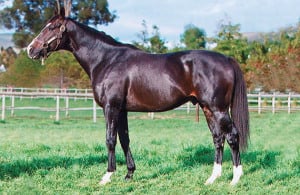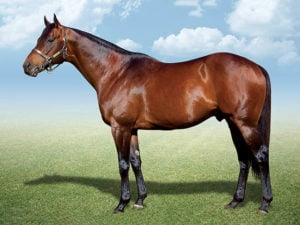It says a lot for the allure of top racehorses that we put up with so many failures in the pursuit of breeding or selecting them. Short of “catching lightning in a thimble” – California Chrome style – our most predictable way of skewing the probabilities in our favour is to stick to the progeny of stallions who beat the averages for the breed, writes Oscar Foulkes.
These are sobering numbers so I’ll mention them just once. Slightly less than half of all foals born will win at least one race. Just 3% of foals will become stakes-winners (i.e. earn big black type), and 0.5% will be Grade I winners.
Go ‘Per Foal’
Many stallion stats are offered on a ‘per runner’ basis. In my view, the only truly representative picture is ‘per foal’.
Great stallions will achieve close to 10% stakes-winners. While they deliver a three times improvement on the breed average, it still means that nine out of 10 of their foals won’t deliver on the dream. Jet Master isn’t far off this, and Western Winter has 11% stakes-winners. They also produce a high percentage of winners from foals – at least two-thirds, or in the case of Western Winter three-quarters. That’s proper. Sadly, the last (small) crop of Western Winter will be sold next year; he remains on buyers’ radar, but isn’t an option for breeders.
Making It
Amongst active stallions, Dynasty, Silvano, Captain Al, Var and Trippi produce roughly 7% stakes-winners (i.e. in a range from just below seven to just below eight). They’re all ‘making it’. However, from the perspective of breeders, getting access to them is difficult. They are regular sale toppers; unless one is willing to take a flyer on the less impressive individuals, buying their progeny as yearlings is going to be expensive.
Value Stocks
So, in Warren Buffett parlance, what are the ‘value stocks’? Based upon a stakes-winner percentage in the vicinity of six (i.e. double the average), and excluding the abovementioned five stallions, as well as any others on the current season sires’ list that are no longer active, I could find just three prospects:
Count Dubois has the Grade I winning French Navy in his current crop of three-year-olds and roughly 6% stakes-winners from foals. While his percentage of winners doesn’t beat the average by quite the same margin, his stakes-winner percentage puts him into territory one would have to call successful. His yearling averages probably make him more interesting for buyers than breeders, but if you’re going to end up racing something you couldn’t sell at least you know you have probabilities on your side.
Antonius Pius has six stakes-winners from his 105 South African-born foals (four- and three-year-olds). While the sample size is a too small for a confident assessment, one can’t argue with his percentage of stakes-winners.
Also with six stakes-winners is Sail From Seattle, but from 128 foals. However, he could pick up another one or two, which would take him to comfortably over 6%. He looks progressive. And, you have to respect a stallion that produces a Guineas winner.
Hold These
The stats from Judpot’s first crop are excellent, but his averages are affected by his second crop. It’s too early to apply the 6% rule to him. Similarly, it is impossible to definitively assess Grade I-producing sires Lateral, Mambo in Seattle and Elusive Fort at this point in their careers. In investment terms, these would have to rate a ‘hold’.
Breeders and owners (or trainers) could play this differently. Commercial breeders have to keep their eye on the auction money. They may take a view on unproven stallions that promise major upside as their runners hit the tracks. Owners in search of a little certainty may opt for one of the ‘six-percenters’.
Unfair?
As impressive as the big sales prices have been this year, the market is an all-or-nothing affair. Most yearlings sell at prices close to the median, which is a long way below the headline grabbing top prices. It seems a little unfair that the progeny of ‘six-percenters’ have to slog it out with everyone else.
A few words on the research. For the purposes of this exercise I have excluded the current crop of two-year-olds. The main information source is the Sire Foal Report on ARO.co.za, which must be the most underrated resource in the industry.














